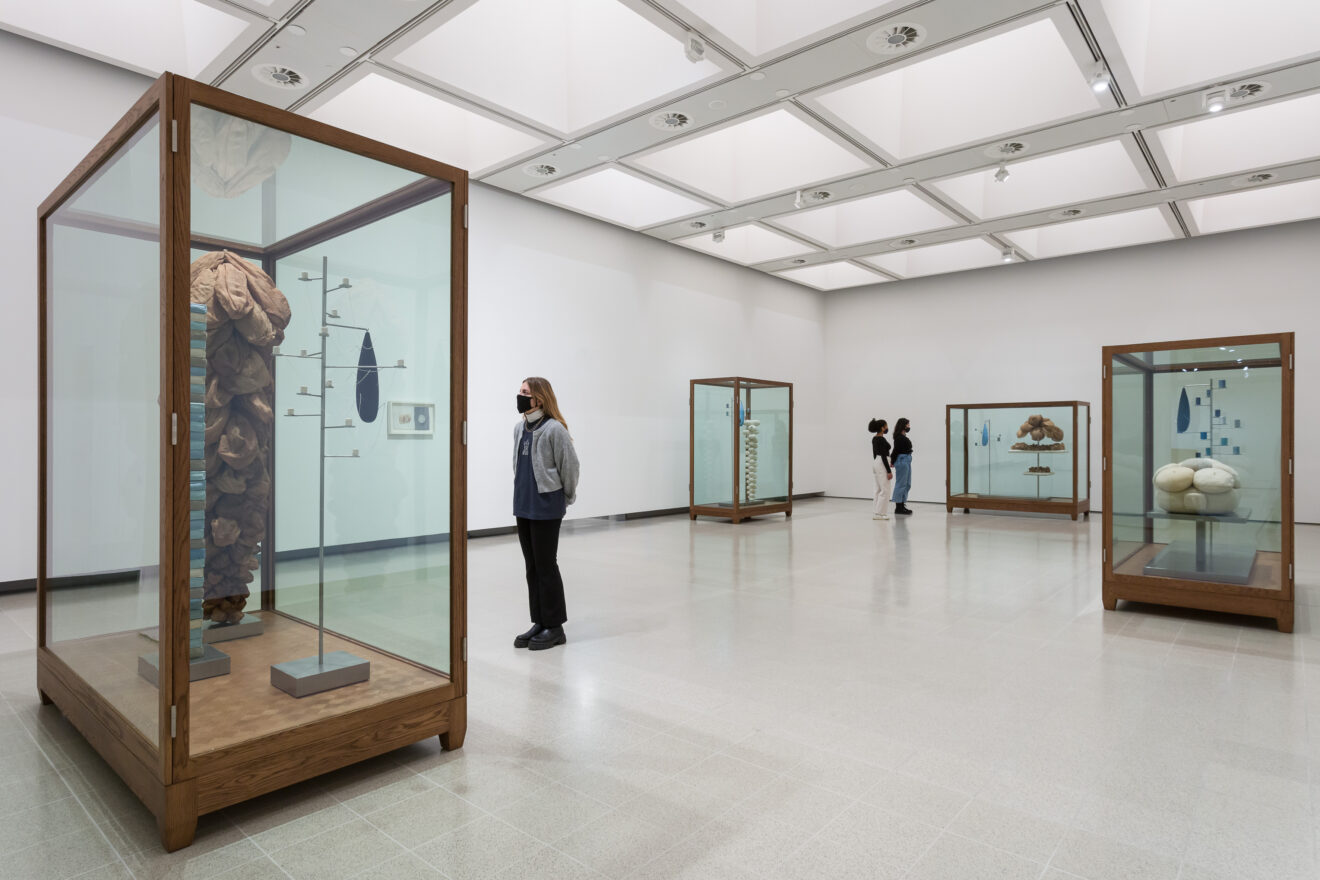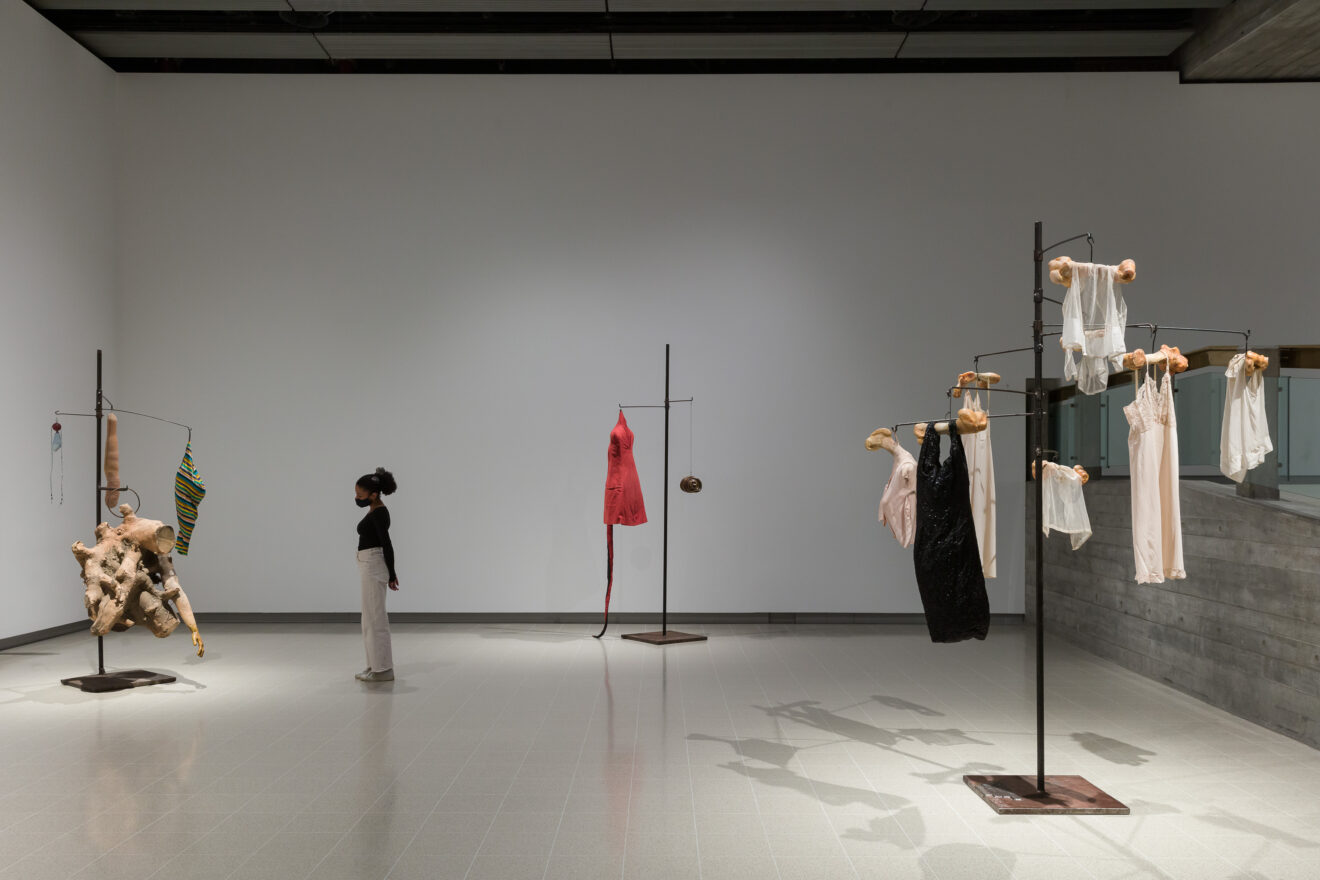The Hayward Gallery has opened its doors to the first retrospective of textiles artist, Louise Bourgeois.
The profound exhibition The Woven Child studies the interwoven emotions and unravelling relationships of Louise Bourgeois throughout her lifetime.
With a career covering eight decades, Louise Bourgeois is a worthy figure in contemporary art. The French-American artist is best known for her sculpture and installations as well as her influence on the world of fashion and textiles.
The Woven Child stitches together a beautiful, yet dark, timeline of the incredible textiles and fabrics designer using her works from the latter part of her career.
Curated by Hayward Gallery Director, Ralph Rugoff, alongside Assistant Curator Katie Guggenheim and Curatorial Assistant Marie-Charlotte Carrier, Bourgeois’s first major retrospective at the Hayward Gallery on the South Bank will be open to the public from February 9 until May 15.
Ralph Rugoff, Hayward Gallery Director, said: “We are thrilled to present this retrospective of Louise Bourgeois’s rich and utterly compelling works made with textiles. While touching on many themes central to her works, Bourgeois’s carefully considered use of varied fabrics, including time-worn materials, imbues her late sculptures with a striking sense of intimacy, vulnerability and mortality.
“Over a decade after the artist’s death, these works continue to challenge us with questions that seem more compelling and urgent than ever.”
The exhibition focuses on a time when Bourgeois started to explore identity and relationships, which she often explained was affected by her childhood. The incredibly intricate body of work articulates her lifelong concerns including sexuality, family, reparation and memory.
The quiet and peaceful gallery is awash with sculptures, textiles, clothing, etchings and tapestries. You are eased into the exhibition space with a light pallet of textiles and the artists’ own garments. At first glance, the lingerie seems delicate and gentle swinging from the ceiling. However, look closer and you’ll see that the hangers are in fact large bones.
As you progress around the exhibition, the darker emotions are more evident. Move around the first room and you’ll be greeted by the Lady in Waiting. An embroidered doll trapped in a vitrine with spider-like needle legs appearing from her body.
Depicting the claustrophobia of a life not lived, the figurative installation is eerie and a little disturbing. The piece will inevitably become ingrained in your memory as you move around the gallery.
Continue around the gallery and you’ll see intertwined woven sculptures of human bodies. Somewhat primal, the headless life-sized forms are Bourgeois’s portrayal of her childhood understanding of sexuality.
NOW READ: Lubaina Himid at Tate Modern
Dolls and drawings adorn the walls. Look closely, however, and you’ll see a woman with three heads or two heads embraced in a sultry kiss.
Continue up the spiral staircase, past the hanging headless body and you’ll be face to face with the main event. The dramatic installation, Spider, was created using steel, wood, glass, fabric, rubber, silver, gold and even bone.
A recurring theme in Bourgeois’s work, the large, dramatic spider sits upon a metal cage which represents its web. Within the steel box, are a selection of the artist’s belongings, including a ripped tapestry, with a picture of what seems like the devil, hanging from the side. The piece is said to depict a mother and the artist’s difficult relationship with her own.
Bourgeois’s mother, Joséphine, was often ill and a young Louise cared for her for long periods of time before her untimely death when Bourgeois was just 22. Alongside her father’s continual infidelity, her mother’s death led to the artist’s strong fear of abandonment, which is a key theme in Bourgeois’s work and throughout the exhibition.
As the exhibition continues, Bourgeois’s obsession with opposites is apparent; hard and soft; trauma and reparation; and figuration and abstraction are all notable. Bourgeois creates work stuck in a limbo of beauty and unrest.
A must-see retrospective, Bourgeois’s depictions of childhood wounds still being contended with in adulthood will influence and interest us for years to come.
February 9 until May 15
southbankcentre.co.uk
For the latest headlines from the City of London and beyond, follow City Matters on Twitter, Instagram and LinkedIn.










